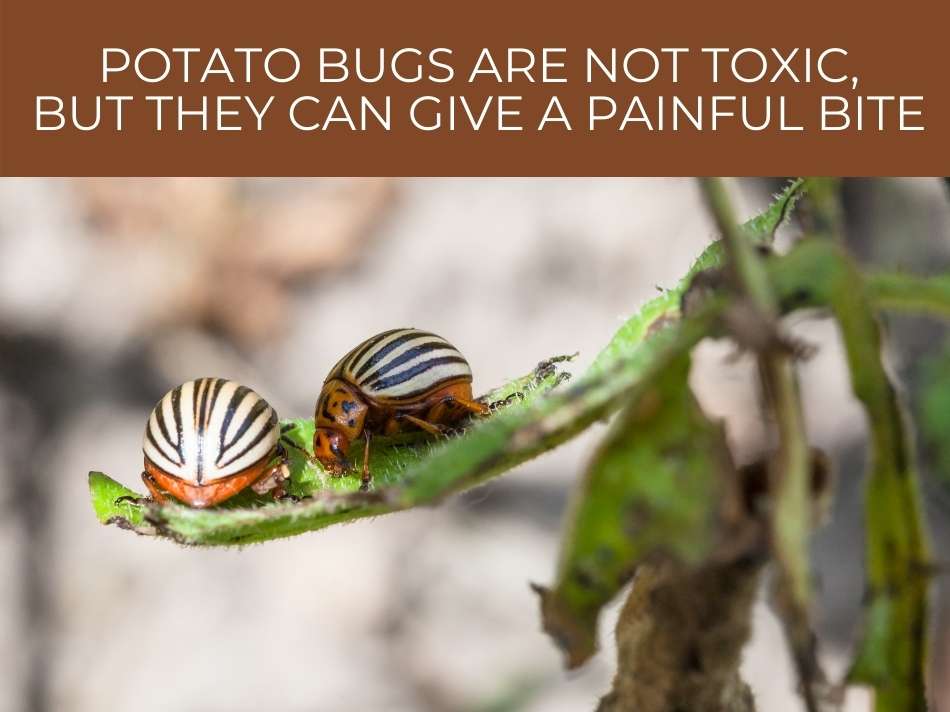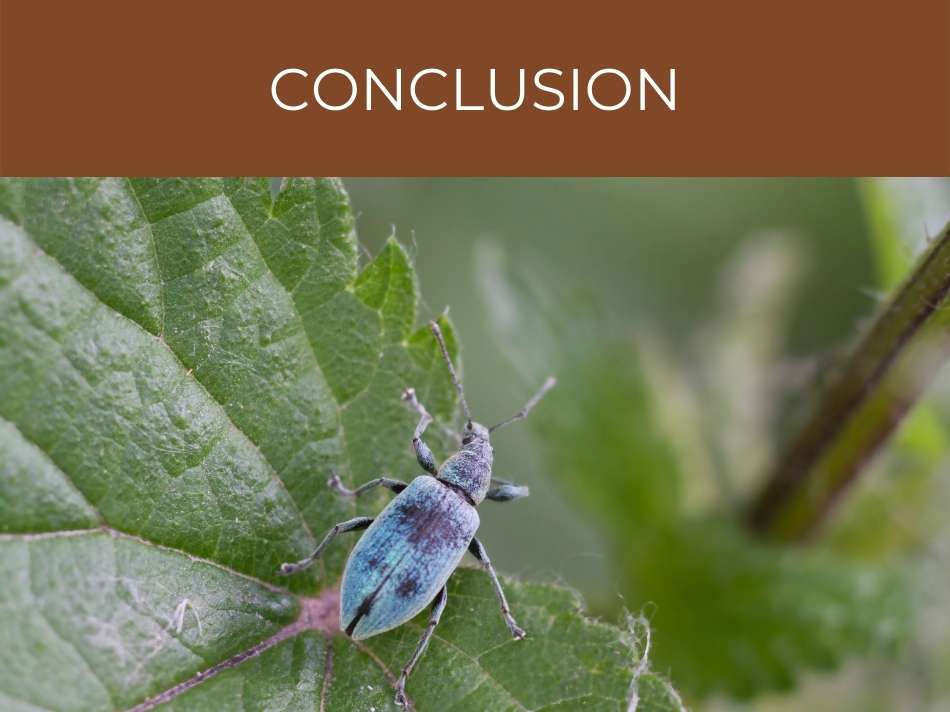Potatoes are a great crop for the vegetable garden. As tuber crops, however, you don’t know how much yield you’re going to get until the growing season is over and you dig up your haul. If you’ve had an infestation of a potato pest, this moment of anticipation can be very disappointing.
The most common potato pests are the Colorado potato beetle, potato worms, & the larvae of the potato tuber moth. Potato bugs can also cause damage although they are not particularly partial to potatoes. Sweet potato vines are in a different plant family, & are prone to different pests.
The risk of most potato pests can be reduced by only planting certified, pest-free tubers, and practicing crop rotation.
They are prolific producers, can be grown with shallow root plants like onions, and are available in a host of varieties that you can’t get at the supermarket.
Here is our quick guide to the most common potato pests and how to identify them.
Find out the best soil for potatoes.

Potato bug
Potato bugs are nocturnal insects, also known as Jerusalem crickets.
Despite the name, Jerusalem crickets do not originate from Jerusalem and are not true crickets.

The potato bug, also known as the Jerusalem cricket, is a flightless insect. There are nineteen different species, found in the Western US, Mexico and Central America. They grow to 2-3 inches in size and have a stripey, orange/brown body, and a large head.
They have strong mandibles that can eat into the tough outer layer of tubers, and even other insects.
Their feet allow potato bugs to burrow beneath the soil to reach tubers and roots.
Potato bugs produce a sound during mating season, by drumming their abdomens on the ground, and each species produces a different sound.

Are potato bugs harmful
Although potato bugs do eat potatoes, they don’t have a particular preference for them.
Potato bugs are not necessarily pests and only begin to eat crops if they run out of organic material in the soil.
Potato bugs are not toxic, but can bite & emit a foul smelling liquid if threatened. They help aerate soil as they feed on dead organic matter. Potato bugs can eat potato crops, & also cause damage to other fruits & vegetables, since they eat young plants & their saliva is toxic to plants.

Potato bugs are not toxic, but they can give a painful bite.
If potato bugs are threatened, they will also emit a foul smelling liquid.
If you do have an infestation, you can try spreading food grade diatomaceous earth around your vegetables.
Diatomaceous earth works by breaking down insects’ exoskeleton, which causes them to dry out and die.
Neem oil is another natural solution that interferes with insects’ hormone function, but does not cause harm to plants or humans.
See how many potatoes you can get per plant.

Potato beetle
Colorado potato beetles are around ⅓ inch in length, and are yellow with five dark stripes on their wing covers.
They are native to the Colorado region, but have spread to most temperate regions around the world.
The Colorado potato beetle is a yellow and black striped beetle that is around ⅓ inch in length. It is native to the Rocky Mountain region, but has spread to Europe and other temperature regions. The potato beetle is a serious pest for potato crops.
The larvae of potato beetles are red with a black head and legs, turning orange when they are close to pupation.
Potato beetles spread by flying short distances amongst crops, being blown by winds, or in contaminated produce, packaging or machinery.
The three-lined potato beetle is also a potato crop pest, and is from the same family but different genus to the Colorado potato beetle.
Only plant potatoes from certified suppliers to ensure you are not planting crops that have already been contaminated with pests.

Potato worm
Potato worms are very small, less than 1mm and are difficult to spot.
The worms lay their eggs in tiny cysts on the roots of potatoes.
Potato worms, or potato cyst nematodes are microscopic worms that live in the soil and attack the roots of young potato plants. They are very persistent pests and eggs can remain viable in the soil for 20 years. Practicing crop rotation is a way of controlling potato worm numbers.
The cysts can survive in soil for twenty years, and are spread by wind, rain and transfer by animals and humans.
Infected crops produce smaller potatoes which can also be covered with lesions.

Potato caterpillar
The potato tuber moth lays eggs which hatch into potato caterpillars.
Potato caterpillars are the larvae of the potato tuber moth. It is found in the tropics and subtropics all around the world. The larvae cause damage by eating into potatoes through the eyes, creating tunnels that fill with excrement or act as entryways for rot.
Adult potato tuber moths have gray/brown wings, a wingspan of around an inch and are nocturnal.
The moth lays yellow eggs on leaves or the eyes of infested potatoes, which hatch in 2 to 6 days.
The larvae are cream caterpillars, with a black head, and are half to three quarters of an inch in length.
The pupae are yellow/orange, and can be found in the tubers, surrounding soil or leaf litter.
You should also avoid leaving harvested potatoes out on the soil overnight, as this is an opportunity for the potato tuber moths to lay eggs.
Find out how deep you should plant potatoes.

Sweet potato vine pests
Although sweet potatoes are also a tuber, they are only distantly related to potatoes.
Sweet potatoes are only distantly related to potatoes, and are affected by different pests. The most serious are the sweet potato weevil, the banded cucumber beetle, the silverleaf whitefly and wireworms. Other pests include aphids, crickets, earwigs, mites and other beetle species.
Sweet potatoes are in the morning glory family, whereas potatoes are in the nightshade family.
Check our complete guide to growing sweet potatoes.
One of the most serious sweet potato pests is the sweet potato weevil, which is a small beetle.
The sweet potato weevil larvae burrow into underground tubers and roots, creating tunnels that are susceptible to disease.
The banded cucumber beetle is another beetle that affects sweet potatoes, and feeds on the young roots of plants.
The leaves of sweet potato vines are susceptible to silverleaf whitefly, small, flying insects that suck the sap from foliage.
Wireworm larvae attack sweet potato roots, eating small circular holes in them.

Conclusion
Potatoes are typically an easy crop to grow in a home vegetable garden, and give good yields with very little work.
They are susceptible to a number of pests, however, which can destroy the underground tubers before they can be harvested.
To reduce the risk of infestation, only purchase certified pest-free potatoes and practice crop rotation.

